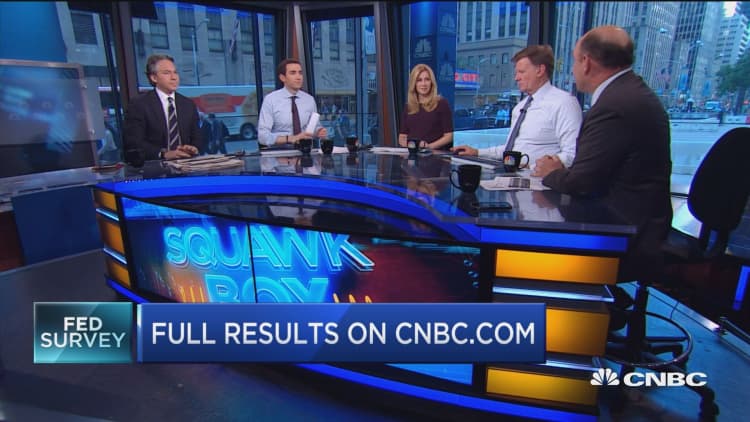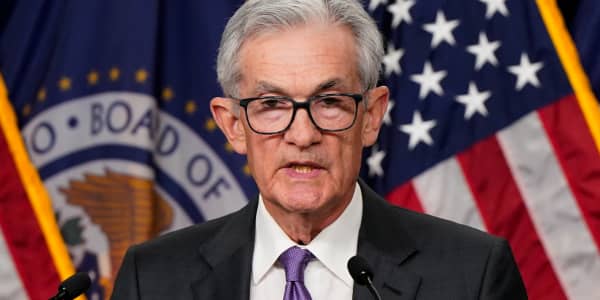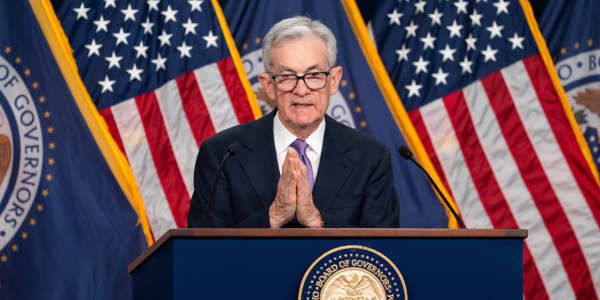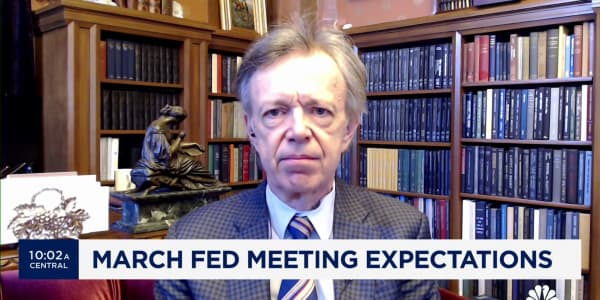
The market thinks the Fed pays too much attention to it.
Seventy percent of respondents to the June CNBC Fed Survey said the Federal Reserve is too concerned with market reactions to its monetary policy, while half said the central bank is overly influenced by the latest high-frequency economic data.
"The Fed has paid too much attention to short-term market volatility," said John Ryding, chief economist at RDQ Economics. "Communication is unclear. … The Fed needs to rethink and clarify the basis for policy decisions."
But a 60 percent majority of respondents said the Fed pays the right amount of attention to international economic and financial developments, a key reason the central bank has been on hold since it raised rates for the first time in nine years last December.
Some think the Fed should go even further. "International markets and events are much more important than the Fed seems to recognize or to admit," Robert Brusca of FAO Economics wrote in response to the survey.
The 41 survey respondents, who include economists, fund managers and analysts, unanimously think Fed policymakers will leave rates unchanged at current levels when they meet this week. Half pointed to the weak May jobs report as the main reason the Fed will pause. Only 13 percent cited uncertainty surrounding the Brexit vote on June 23. Survey respondents now expect the next rate hike will be in September, a month later than previously thought.
"The upcoming British referendum was a strong enough reason to delay a hike in June," said Neil Dutta of Renaissance Macro Research. "The latest payroll figures lower the sense of urgency to hike in July."
The U.S. economy added just 38,000 jobs in May, way below Wall Street's expectations. More than half of the survey respondents attributed the weakness to a statistical blip that is not reflective of a larger trend, while one-third said the report marks the beginning of a trend of lower job growth. Uncertainty from employers about future growth is seen as the top factor depressing job gains, followed by the expectation that the economy is at full employment.
Some argued that if the Fed would look beyond just the jobs report, it would find reasons to raise rates. "The Fed should stop putting so much weight on a single measure — the increase in nonfarm payrolls," said Robert Fry of Robert Fry Economics. "If you look at a broader sample of data (April personal consumption expenditures and new home sales, house prices, various measures of labor costs, unemployment claims), it's hard to justify not raising the federal funds rate."
Survey respondents still anticipate one or two rate hikes this year, with the federal funds rate reaching 0.74 percent by year-end. A majority does not see the Fed allowing its balance sheet to decline until after May 2017, two months later than the previous survey. The Fed is not expected to reach its terminal rate, at 2.64 percent, until the fourth quarter of 2018.
"U.S. economic conditions are stable and modestly improving," said Thom Melcher, chief investment officer at PNC Asset Management Group. "Valuations are fair given the pace of growth. The Fed's next move will be to tighten, but they are not in a rush to do so."
The risk of the U.S. entering recession ticked up slightly to 23.5 percent, still below its recent high in January of 28.8 percent. Global economic weakness, tax and regulatory policies and rising interest rates are seen as the biggest threats to the U.S. recovery. The possibility of protectionist policies, asked for the first time, was seen by 13 percent of respondents as the biggest threat. Growth is expected to remain around 2 percent for the next two years, while the inflation outlook is slightly higher than in April.
NRF Chief Economist Jack Kleinhenz said that while the recent economic data have been generally positive, "the pace of a Fed policy change and inflation are uncertain."
Despite the uncertainty, Wall Street is upbeat on stocks, predicting the S&P 500 will close the year about 3 percent above its current level, and 8 percent higher by the end of 2017. The stock market outlook has rebounded since the sell-off earlier this year, but expectations for Treasury yields have remained muted. The yield on the 10-Year Treasury, currently at 1.61 percent, is seen rising to just 2.10 percent by the end of the year, about 30 basis points below the forecast in the January Fed survey.
The CNBC survey also found that Wall Street is nearly united in forecasting that Hillary Clinton will be the next president but divided over whether she or Donald Trump is best for the economy and the stock market.






